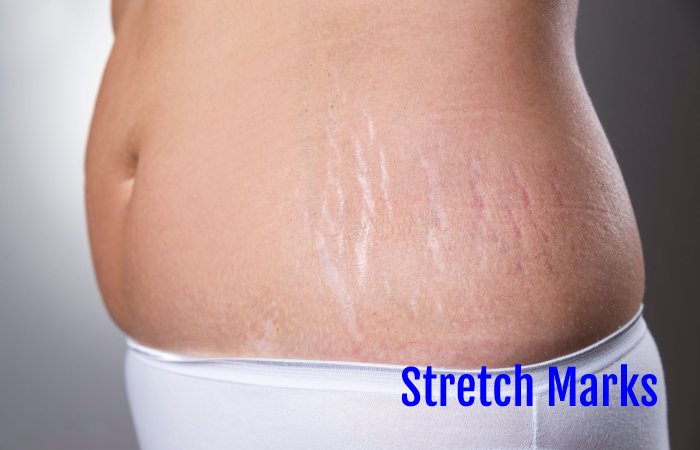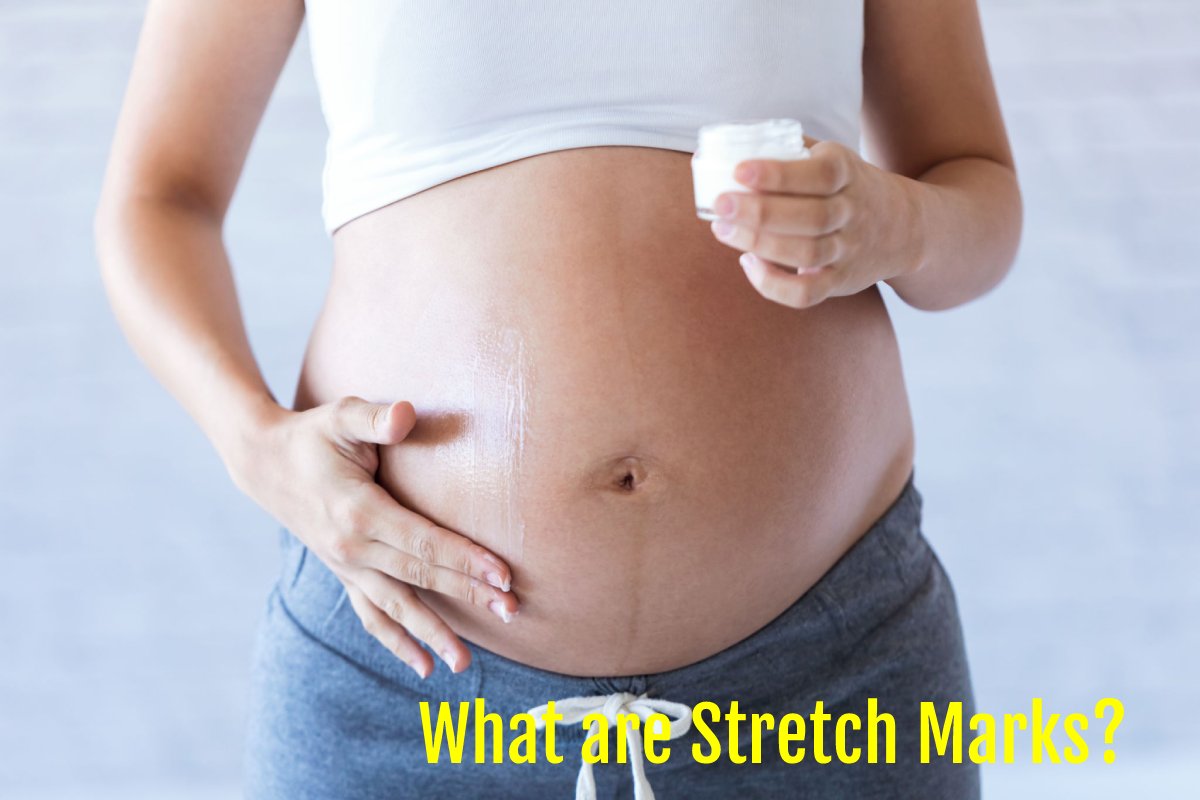Table of Contents
Introduction
Stretch marks are irregular stripes of skin that are usually caused by stretching of the skin. They are most often seen on the breasts, hips, thighs, buttocks, abdomen, and sides.
They usually show up as initially reddish, shiny, thin parallel lines, which later take on the appearance of a scar. Finally, they sometimes present a formation of furrows in the skin with a whitish colour.
With a straight, curved or twisted course, these atrophic-looking skin bands can measure several centimeters long and one centimeter wide, with a wrinkled surface to the touch and with a different texture, and are generally multiple, symmetrical asymptomatic.
When they first look, they tend to be red, purple, pink, reddish-brown, or dark brown, depending on skin colour.
How To Remove Stretch Marks?

They usually form in the armpits, thighs, abdomen, chest, and groin area to remove stretch marks. Dermatologists associate its appearance with the rapid expansion of the skin, such as that caused by weight gain during pregnancy or puberty, breaks in the connective tissue and lack of collagen.
Clinically, they evolve in three stages: An initial subclinical phase, marked by degeneration and decreased function of the fibroblasts, then the inflammatory phase that manifests as elevations in linear, curvilinear, undulating or zigzag shapes, erythematous in colour, and by lastly, the healing phase where the lesions present centrifugal atrophy, the epidermis thins, is flaccid and adopts a shiny, smooth appearance.
What Causes Stretch Marks?
Although the origins of stretch marks are not completely clear, many dermatology experts associate them with different factors such as rapid stretching of the skin, endocrine imbalance and toxic causes.
- The truth is that stretch marks are common in pregnant women, especially during the last trimester of pregnancy. When pregnant skin is rapidly stretched by weight gain, this abrupt change causes the collagen and elastin that support the skin to break down, and as it heals, begin to appear.
- Another possible cause of the appearance of is the alteration of the collagen formation process, the substance that provides elasticity to the skin. It may be due to overuse of corticosteroid creams or having a pre-existing condition such as Cushing’s disease or Marfan syndrome.
- The possibility of a person developing skin stretch marks increases due to genetic factors and the degree of stress on the skin. But on the other hand, the hormone cortisol level in the body could also influence. Therefore, this hormone produced by the adrenal glands weakens the skin’s elastic fibres.
Risk Factors For Developing Stretch Marks
There is a genetic predisposition to develop stretch marks, and several factors favour their appearance, such as:
- Being female. It affects 70% of women between 10 and 16 years old.
- Having a family history of stretch marks.
- Being pregnant, especially if you are young.
- Present a growth spurt in adolescence.
- Have rapid weight gain or loss.
- Long-term use of topical or oral corticosteroids.
- Exercise and take anabolic steroids.
- Having a genetic disorder, such as Cushing syndrome or Marfan syndrome.
How to Remove Stretch Marks?
The so-called usually disappear after the cause that generated them disappears, such as pregnancy or the rapid growth of puberty. However, while treatment may cause them to fade, they may never completely go away.
The most frequent dermatological recommendations to treat different forms of stretch marks are the following:
- Red In these cases, it is suggest to exfoliate the skin with circular movements on the using exfoliating creams. In addition, the use of moisturizing creams and oils that stimulate cell renewal is beneficial.
- Purple marks Use a good cream prescribed by a dermatologist to rub it on the affected area along the entire length of the stretch marks until the skin absorbs the product. Rosehip oil is another excellent option for masking and scars, helping to leave skin smooth and clear.
- White stretch marks Aesthetic treatments are indicated that increase local circulation and skin hydration and stimulate collagen production, such as: Peeling with retinoic acid, performed by a dermatologist or physiotherapist, or the use of CO2 laser or pulsed light, that completely removes white stretch marks.
How Do You Prevent Stretch Marks?
Among the measures to prevent , the following stand out:
- Keep skin hydrated. Well-hydrated skin is more flexible and can better resist stretching. That is why you have to consume enough water.
- Massaging with emollients helps promote circulation and potentially minimizes the appearance of stretch marks.
- Use retinoids. Retinoids work by promoting the production of collagen, which helps the healing process. However, they are not safe during pregnancy or breastfeeding and work best when are still red and inflamed.
- Creams with hyaluronic acid. Hyaluronic acid is safe for pregnant and lactating women, plus it increases the moisture content of the skin, keeping the skin supple and elastic.
Conclusion
Stretch marks are not a reason to be alarmed because beyond their aesthetic effect, and they do not represent a serious health problem. In fact, with the adoption of specific preventive measures, developing them can be minimize.

